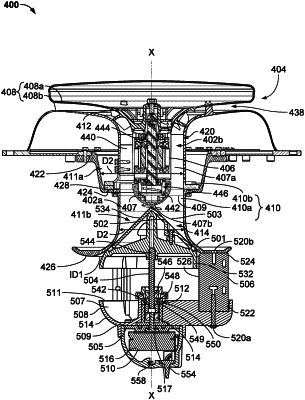| CPC B64B 1/62 (2013.01) [B64B 1/40 (2013.01); B64B 1/64 (2013.01); B64C 39/024 (2013.01); G05D 1/042 (2013.01); B64U 10/30 (2023.01); B64U 50/19 (2023.01)] | 19 Claims |

|
1. A system comprising:
an altitude control system for an unmanned aerial vehicle comprising:
a compressor assembly including:
a compressor housing including an inlet, an entrance to the inlet, an outlet, and a central cavity extending therethrough and joining the inlet to the outlet;
a diffuser coupled to the compressor housing;
the diffuser having a lower portion, an upper portion and a passageway extending between the lower portion and the upper portion;
a motor housing disposed within the central cavity at the inlet of the compressor housing;
a motor disposed within the motor housing; and
an impeller disposed at an outlet of the compressor housing, the impeller coupled to a driveshaft for rotation therewith, wherein the impeller overlies the motor housing such that the motor housing is positioned between the impeller and the entrance to the inlet; and,
wherein an interior surface of the compressor housing extends around the central cavity, and wherein the motor housing is spaced away from the interior surface, such that air may flow around the motor housing to dissipate heat generated by the motor.
|